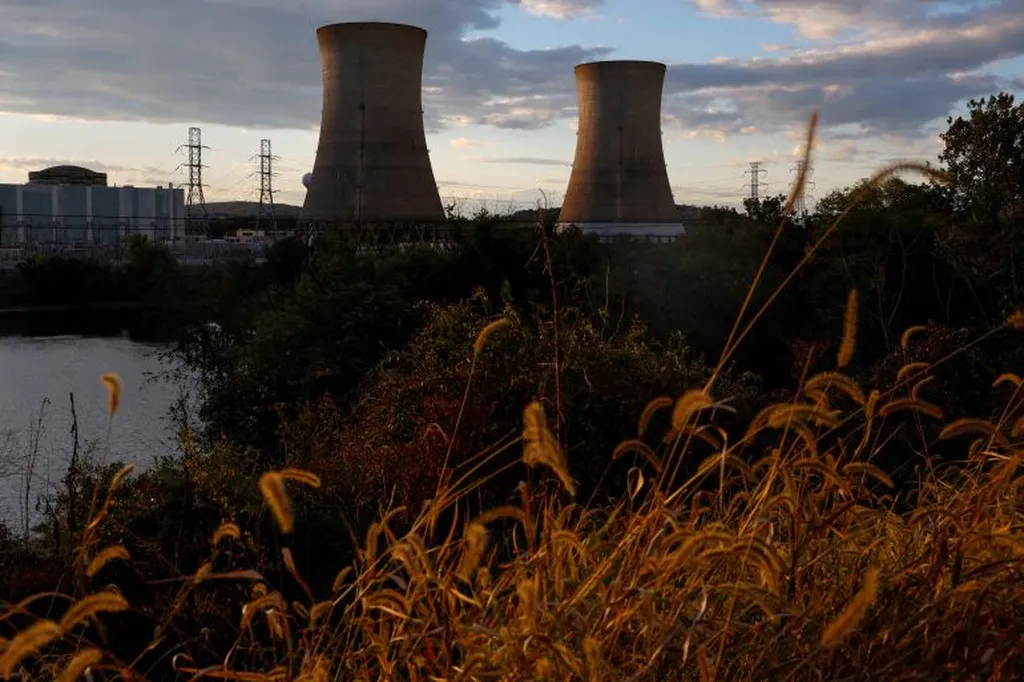The U.S. administration’s 2025 executive orders have set a bold course for the energy sector, directly linking grid reliability and fossil fuel dominance to the growth of artificial intelligence (AI) infrastructure. This strategic pivot aims to secure national competitiveness against China’s rapid advancements in AI and clean energy, positioning coal and nuclear power as critical pillars for energy independence and data center expansion. The implications for investors and the broader energy landscape are profound, with clear opportunities emerging in utilities, grid modernization, and advanced nuclear technology.
The administration’s ambitious plan to expand nuclear energy capacity from 100 GW to 400 GW by 2050 is a cornerstone of this strategy. By fast-tracking reactor approvals, revitalizing the domestic nuclear fuel cycle, and deploying advanced reactors by 2026, the government is creating a multi-decade tailwind for companies involved in reactor construction, fuel supply, and waste management. Utilities with significant nuclear assets, such as Exelon, stand to benefit from regulatory reforms that reduce bottlenecks at the Nuclear Regulatory Commission (NRC). Meanwhile, advanced reactor developers like NuScale and X-energy, backed by government contracts, could scale rapidly if their pilot projects meet the 2026 deadlines.
The inclusion of coal as a “clean” energy source under the AI infrastructure order, albeit contentious, underscores the administration’s emphasis on grid stability. Executive Order 14261 mandates federal land reviews to identify coal-rich areas for data centers and streamlines mining permits, repositioning coal as a baseload power necessity. This policy shift creates opportunities for coal producers with export exposure, such as Peabody Energy and Cloud Peak Energy, which may benefit from export incentives and partnerships with steelmakers leveraging metallurgical coal. Additionally, grid modernization firms like AECOM and Black & Veatch are poised to profit from coal plant retrofits and data center siting.
The AI infrastructure order’s requirement for data centers to pair with clean energy has spurred a race to secure federal land. The Department of the Interior’s designation of five geothermal zones and the Defense/DOE’s identification of three military/base sites by February 2025 highlight opportunities in geothermal energy and land development. Geothermal developers like Ormat, the largest U.S. player in the sector, stand to gain from priority zone allocations. Meanwhile, data center real estate firms like CyrusOne and QTS Realty could partner with utilities to develop energy-secured sites.
However, this strategic pivot is not without risks. Environmental opposition, including lawsuits challenging NEPA exemptions or coal’s “clean” status, could delay projects. Technological hurdles, such as cost overruns or delays in advanced reactors and carbon capture technologies, also pose challenges. Furthermore, global competition remains formidable, with China’s investments in AI and renewable energy requiring the U.S. to stay agile in its policy approach.
For investors, the administration’s policy shift presents clear opportunities. Utilities with nuclear exposure, such as Exelon and Duke Energy, offer steady returns tied to regulatory tailwinds. Advanced nuclear technology can be accessed through ETFs like the Global X Nuclear Energy ETF or direct investments in startups via venture funds. Geothermal and grid modernization firms, like Ormat and AECOM, warrant a 10-15% allocation in energy portfolios, with a focus on federal land projects. Coal investments should be approached cautiously, using companies like Peabody Energy as a leveraged play on exports and steel demand, but paired with hedges against carbon litigation risks.
The U.S. energy sector is undergoing a strategic pivot, with coal and nuclear positioned as keystones for AI infrastructure growth. This shift underscores the growing intersection of energy and technology, where energy infrastructure is no longer just a commodity but a critical component of technological supremacy. As the global AI arms race intensifies, investors and industry stakeholders must stay ahead of the curve, positioning themselves to capitalize on the fusion of power and data.

